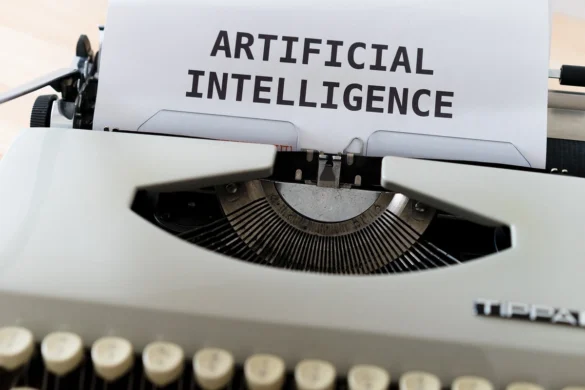As India gears up to host global AI summits, it underscores the strategic significance of artificial intelligence for the nation’s economy. However, alongside technological advancements, there arises a pressing need for robust regulation, especially concerning the safety and well-being of children and adolescents. This blog delves into the imperative of AI regulation, global examples of AI regulatory laws, and why India must prioritize child safety in its AI regulatory framework.
Understanding AI Regulation
AI regulation encompasses the establishment of rules, laws, and guidelines by governments and regulatory bodies to govern AI technology’s development, deployment, and usage. The primary objectives of AI regulation include ensuring safety, ethics, and societal benefits while mitigating potential risks. Key aspects covered by AI regulation include:
1. Safety and Reliability: Regulations focus on setting safety standards to prevent accidents or malfunctions, particularly in critical domains like autonomous vehicles and healthcare.
2. Ethical Considerations: AI applications, especially in sensitive areas, may require human oversight to align with human values and ethics.
3. Data Privacy: Regulations dictate how personal data should be handled and protected in AI applications, akin to the European Union’s GDPR.
4. Transparency and Accountability: Some regulations mandate transparency into AI algorithms to facilitate understanding of decision-making processes.
5. Export Controls: Governments may regulate AI technology exports to prevent misuse.
6. Compliance and Certification: AI developers may need to meet certification requirements to ensure compliance with regulatory standards.
7. International Cooperation: Given AI’s global nature, international cooperation is necessary to ensure consistent standards and prevent conflicts.
Global AI Regulatory Laws
Several countries have initiated AI regulatory efforts:
1. European Union (EU): The EU is working on the draft Artificial Intelligence Act, which comprehensively addresses AI, including risk classification, data rights, governance, liability, and sanctions.
2. Brazil: Brazil is developing its first AI regulation, focusing on individual rights, risk classification, and governance, akin to the EU’s draft AI Act.
3. China: China actively regulates AI, especially algorithmic recommendation systems and deep synthesis technologies.
4. Japan: Japan has adopted non-binding social principles and guidelines for responsible AI development.
5. Canada: Canada introduced the Digital Charter Implementation Act 2022, including the Artificial Intelligence and Data Act (AIDA) to regulate AI trade and address potential biases.
6. United States: The U.S. has issued non-binding guidelines for AI risk management.
7. India: India is considering establishing a supervisory authority for AI regulation, focusing on principles for responsible AI and sector coordination.
Prioritizing Child Safety in AI Regulation
Child safety must be a focal point of India’s AI regulation due to several critical reasons:
1. Overall Safety: Regulations should address addiction, mental health issues, and other safety concerns associated with AI services.
2. Body Image and Cyber Threats: AI can distort physical appearances, leading to body image issues. Additionally, AI plays a role in spreading misinformation, cyberbullying, and harassment.
3. Family’s Online Activity: Parental sharing of children’s data can expose adolescents to risks.
4. Deep Fake Vulnerabilities: AI-generated deep fakes can target young individuals.
5. Intersectional Identities and Bias: India’s diverse population requires safeguards against real-world biases transposed into digital spaces.
6. Reevaluating Data Protection Laws: India’s current data protection framework may fall short in protecting children’s interests.
Steps India Can Take to Protect Children
India can adopt the following measures to ensure child safety in the age of AI:
1. UNICEF’s Guidance: Follow UNICEF’s nine requirements for child-centric AI, promoting well-being, fairness, safety, transparency, and accountability.
2. Best Practices: Learn from the Californian Act, emphasizing transparency in privacy settings and assessing harm potential from algorithms.
3. Age-Appropriate Design Code: Develop an Indian Age-Appropriate Design Code for AI based on research on AI’s impact on Indian children and adolescents.
4. Role of Digital India Act (DIA): Enhance child protection in DIA, promoting safer platforms and user interface designs.
5. Child-Friendly AI: Ensure AI-driven platforms offer age-appropriate content and robust parental control features.
6. Digital Feedback Channels: Create child-friendly feedback channels for AI-related experiences and concerns.
7. Public Awareness: Conduct public awareness campaigns involving influencers and role models to highlight children’s role in shaping AI’s future.
To summarize
As India embraces the potential of AI, prioritizing the safety and well-being of its young citizens is paramount. By incorporating global best practices, engaging children in the dialogue, and crafting adaptive regulations, India can create a secure and beneficial digital environment for its youth. In doing so, it not only sets an example for the Global South but also ensures a brighter and safer future for its children in the AI era.


